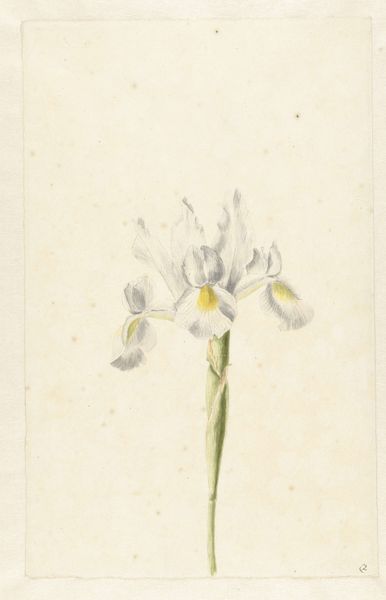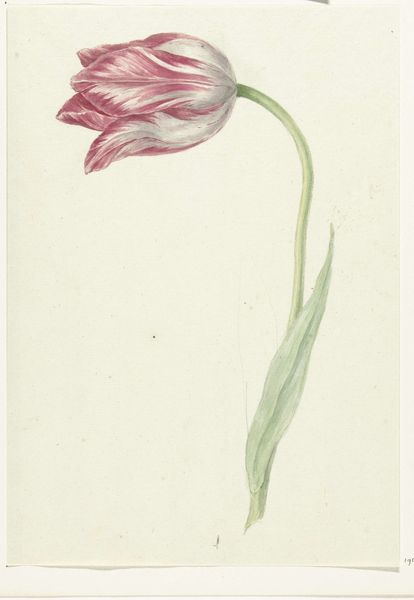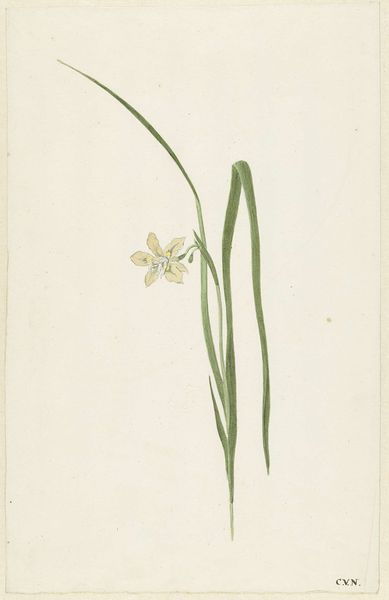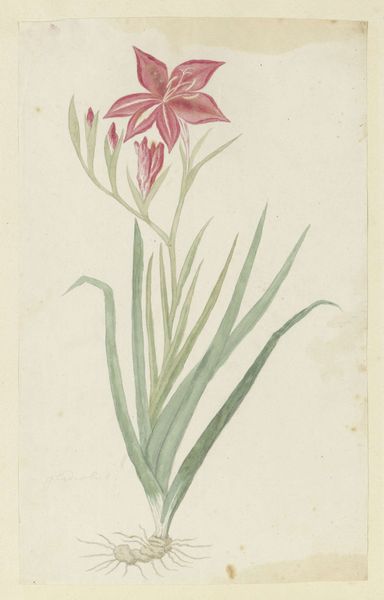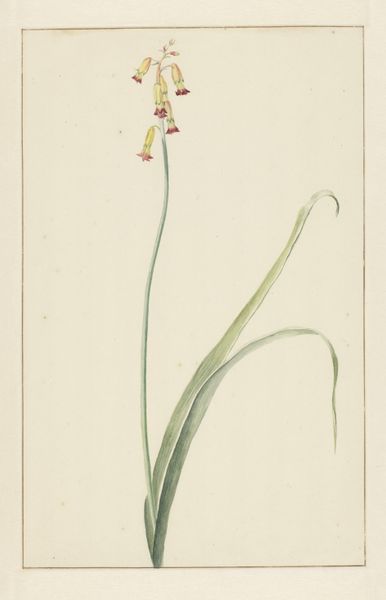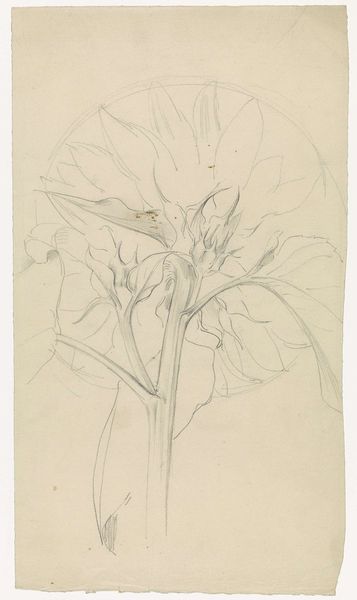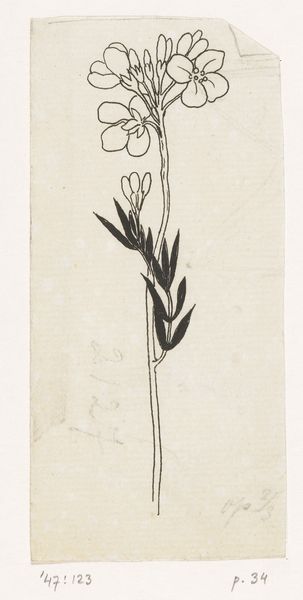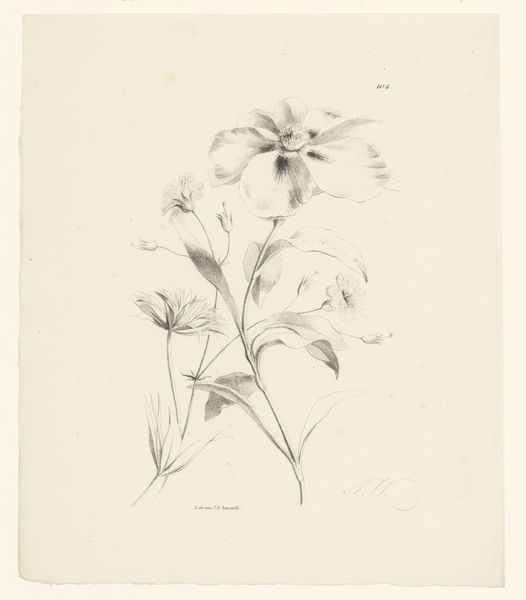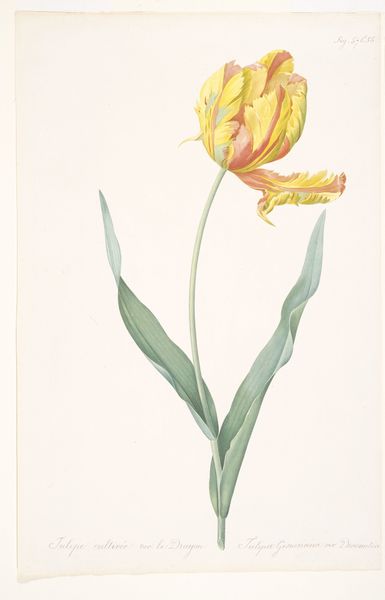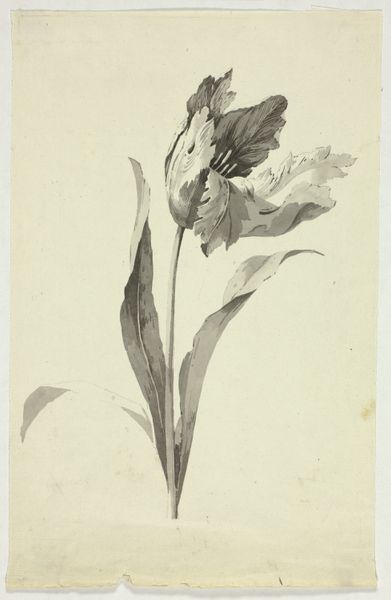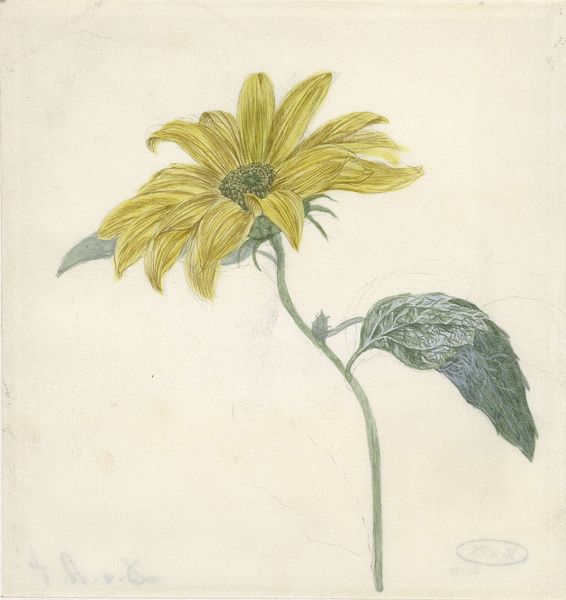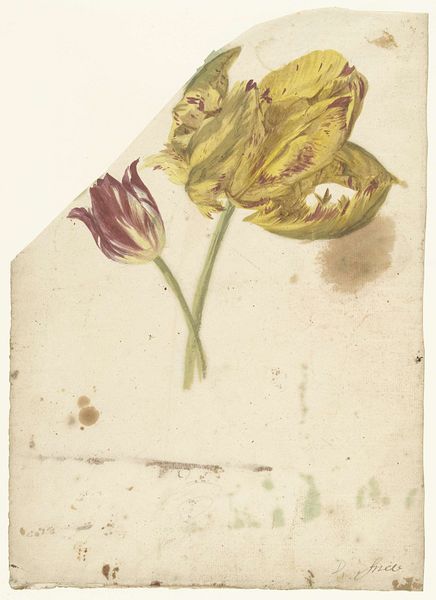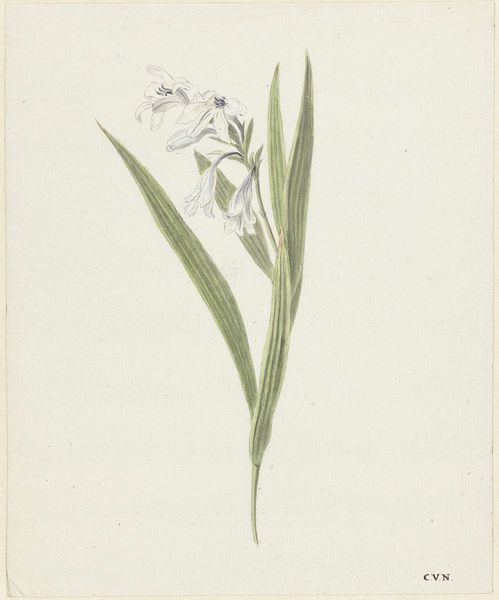
print, etching, watercolor
# print
#
etching
#
old engraving style
#
flower
#
etching
#
watercolor
#
watercolour illustration
Dimensions: height 295 mm, width 184 mm
Copyright: Rijks Museum: Open Domain
Curator: What a lovely depiction of the Gladiolus carinatus Aiton. This is an etching with watercolor, created in 1793 by Hendrik Schwegman. You can find it here at the Rijksmuseum. Editor: Ah, it feels like a scientific illustration from a Jane Austen novel. There's something so precise and yet so romantic about it, the delicate yellow blooms almost glow against the stark white background. Curator: It does capture that era perfectly. Botanical illustration became incredibly popular as part of a larger enlightenment project, meticulously documenting and classifying the natural world. But of course, that was closely tied to colonial expansion and scientific exploration... it's complicated. Editor: Complicated, yes, but so visually serene. I am thinking, it looks almost like the artist painted the very essence of “flower” rather than just *this* flower. Look at the stamen details—they feel symbolic, like capturing the flower’s soul in miniature. It speaks of a quiet fascination and almost reverence. Curator: I see what you mean, its focus on specifics is at odds with that impulse toward broader scientific generalizations happening simultaneously, in say, museum practices. But it also makes it very 'readable,' so to speak. Editor: Absolutely! Did the printmaking medium—etching, specifically—affect how botanical artists approached their subject? How might the wider availability of these prints influence perceptions and conservation efforts surrounding plants? Curator: The reproducibility afforded by etching allowed for a wider distribution of knowledge, democratizing access to images of the natural world, that had, until this point, largely been inaccessible to ordinary folks. It contributed to a kind of "flower power" way before the 60s. Editor: "Flower power," exactly! Though perhaps a slightly more polite, Regency-era version. Thank you for bringing those nuances into sharper focus; I will never look at flower prints the same way! Curator: It was my pleasure; these botanical works help us see how art and science influence our experience, our perspective, even how we think and see nature and our place in it!
Comments
No comments
Be the first to comment and join the conversation on the ultimate creative platform.
